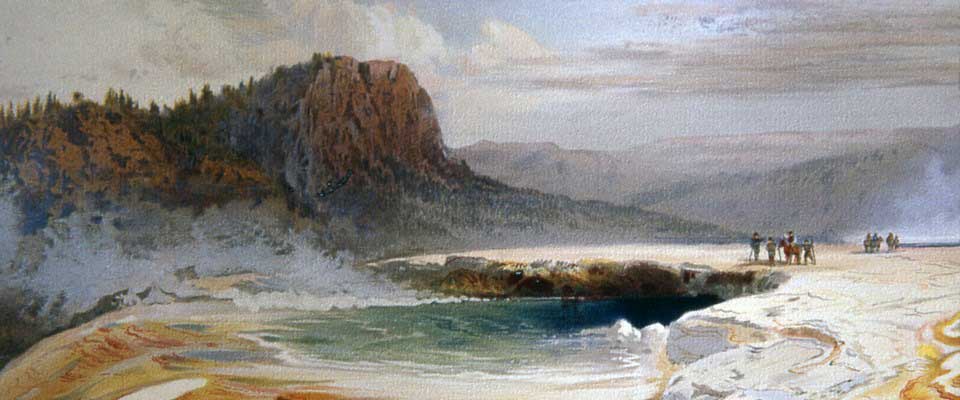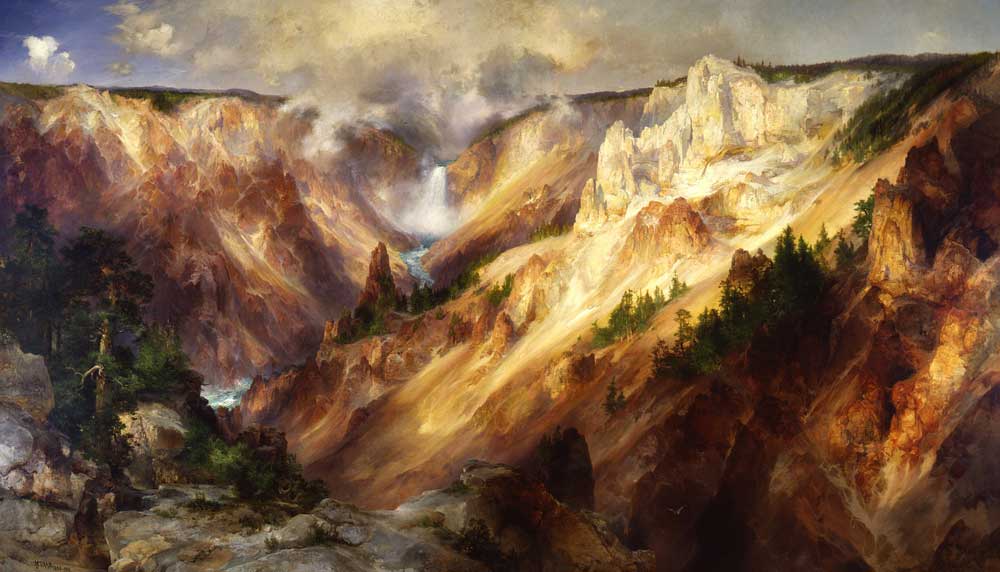Through the Art and Science of Exploration
Greg Tinsley
In 1860, on the cusp of Civil War, an unseasonable spring snowstorm thwarted the first organized expedition to the Yellowstone Plateau, the remote region exclusively known to paleo-Americans and, much later, to only the heartiest of frontiersmen.

“The next thing to suicide,” warned a friend of David Folsom, Charles Cook and William Peterson when speaking to the trio’s upcoming 1869 expedition into the exquisite and ultra-dangerous territory, a wildly mysterious country at the western corners of today’s Wyoming and Montana. So fueled, the party decamped Bozeman and skulked south along the Continental Divide to behold the wonders of Tower Fall and the Grand Canyon of the Yellowstone, the Mud Volcano of Yellowstone Lake, Shoshone Lake and the geyser basins of the Firehole River.
With military escort, in August 1870, a follow-up expedition set forth for Yellowstone led by Henry D. Washburn (Surveyor-General), Nathaniel Langford, Cornelius Hedges and Lt. Gus Doane. The team added explorations of Lower, Midway and Upper geyser basins (where in passing they named Old Faithful), ascended peaks and recorded measurements.
The Hayden Survey of 1871, managed by Ferdinand Hayden, Chief of the U.S. Geological and Geographical Survey, included both artists – photographer William Henry Jackson, sketcher Henry Elliott and painter Thomas Moran – and scientists, through the utilizations of a pair of botanists, a meteorologist, a zoologist, an ornithologist, a mineralogist, a topographer and an agricultural statistician/entomologist.

[Separately, concurrently, and notably missing the all-important creative people, a U.S. Army Corps of Engineers expedition was also in operation in ‘71.]
Later that year, December 1871, the 42nd United States Congress in Washington officially papered the idea of Yellowstone National Park, a new reality that had most recently been inspired by the artworks of Jackson, Elliot and Moran, together with this scientific soundbite from Hayden: “The geysers of Iceland sink into insignificance in comparison with the hot springs of the Yellowstone and Fire-Hole Basins.”
On March 1, 1872, President Ulysses S. Grant signed an Act of Congress that federally, perpetually, protected Yellowstone National Park, America’s first – the world’s first – conservation set-aside.

Read More Conservation Articles
Editor’s Note:
The state of California had withdrawn Yosemite from private sector encroachment in 1864. Likewise, Hot Springs, Arkansas received protection as early as 1832, but neither received National Park status, and federal oversight, until 1916 and 1921, respectively.
Financier Jay Cooke presented painter Thomas Moran (1837-1926) to the Hayden Expedition as “an artist of Philadelphia of rare genius.” His large-canvas Grand Canyon of the Yellowstone was purchased in 1872 for $10,000 by the federal government, who later added his house and studio in East Hampton, NY to the register of National Historic Landmarks.



























